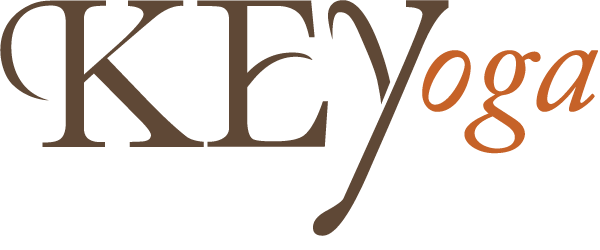You’ve had the thought that you would like to become a yoga teacher.
If you have ever entertained the thought of doing a yoga teacher training program it could be that your intuition is talking to you. I had this hit of intuition one day in a yoga class. The theme of this class was to know what you wanted to do with your life. The teacher asked us to get quiet and go inside and make a mental list of our 10 best qualities or strengths. She suggested that what we wanted to do was encoded in that list. I was at a stage in my life where I needed to make a decision about what to do next. I had just had what I called my midlife crisis; I quit my job, adopted a child and moved, all in one year! Part of what I needed to do was to stay at home and take care of my son, but I was also looking for something else: something more, something for me. When the teacher asked us to do this exercise, a voice in my head said, “I want to be a yoga teacher.”
What I wrote down as my 10 best qualities were:
1. I am outgoing and social. I like being around people.
2. I love to understand how things work.
3. I am good at explaining how things work to other people.
4. I am empathetic.
5. I am good at teaching. I taught woodshop for 18 years.
6. I am hard working.
7. I am conscientious.
8. I am dedicated.
9. I am organized.
10. I have always been a spiritual seeker.
These are all good qualities that helped me become a yoga teacher, but they are not the only “right” qualities. Now it’s your turn. What are your 10 best qualities? Do they fit with the profile of being a yoga teacher?
You’ve been waiting for the right time to do a teacher training program.
A friend once told me that if a thought pops into your head that you should do something, you should pay attention to that thought. It is there for a reason; otherwise you wouldn’t have had that thought. In the Yoga Sutras, the first sutra says, “Atha Yoganusasanam.” This translates as “Now is the time for yoga.” This has been interpreted to mean that yoga, or the union of the mind body and spirit is available now, in the present moment. You don’t have to be perfect, or be able to do a split or a handstand, lose 50 lbs or quit smoking to become a yoga teacher. You just have to be willing to show up. If you have that inspiration it could be your muse talking to you. We often feel that we don’t have enough time, or money, or that somehow we are not good enough, young enough, old enough, smart enough, etc. Life is often messy and if we wait for the perfect time, we can miss the opportunity. If the time is right for you, you’ll know. Listen to that muse. We all know that we will often regret the things we didn’t do.
You are passionate about yoga and want to share that passion with the rest of the world.
Yoga is your favorite form of exercise. You love to do yoga in a class, with your friends, in the park or on the beach. Whenever you travel, the first thing you look for is where you can take a yoga class. You may not be sure exactly what it is about yoga, but you know that it makes you feel better. You feel calm and more grounded after practicing yoga. If you can’t do your yoga practice for a few days, you feel as if you are missing something. It is a discipline that has improved your health and brought you a lot of happiness and you just want to learn more about it and share it with your friends. If someone you know has some kind of an ache or a pain you always find a way to let them know that yoga can help them. You are always trying to talk your friends, or their mothers, into trying yoga.
You love to learn more and more about yoga and about life.
You would be a perpetual student if you could.
You first got into yoga for the physical benefits of the practice but the more yoga you do, the more you realize the other benefits: you feel happier and more settled and your relationships are going more smoothly. You are becoming more interested in the relationship of the breath and your state of mind. You recognize the importance of meditation and are more interested in reading the Yoga Sutras or going to a kirtan or a mala making workshop than going out and partying on a weekend.
You already meditate or you want to learn how.
You may already have a meditation practice, or you want to start one but don’t know how.
You may have downloaded an app on your phone but wonder if it counts as real meditation. Mediation is something that is covered in teacher training. It may be one of the most challenging, yet rewarding practices you can undertake. It is also something that evolves over time.
You love to be around other yogis.
People in yoga teacher training groups often form fast and lasting friendships. There is something about going through the process that bonds people together. Some of it is the learning and sharing of information and some of it is the support that students provide for each other as they learn and grow. Trainings can be intense and wonderful; if you are willing to peel back the veils and look inside the lessons can be life changing.
You’ve thought of becoming a yoga teacher but you can’t touch your toes, or do a split, handstand or put your foot behind your head.
These poses are not necessary to do and in fact most students may never want to or be able to do these things. I once took a poll of my students where I asked them what they wanted from their yoga practice. Most of them said that they wanted to be calmer and less stressed. They were looking for clarity and peace of mind. The third, fourth and fifth reason for doing yoga was to improve strength, flexibility and balance. Advanced poses weren’t really mentioned. I always think it is an asset for a yoga teacher if poses not to come easily to them. If you could accomplish all of the poses you might falsely presume that these things are easy to do and you might wonder why other people can’t do them. When you have to work at being strong and flexible, you are able to better share the path with others and have empathy for them.
You are up for a challenge.
There is something about wanting to become a yoga teacher that excites you, yet there is something that is a little scary, too. Any new adventure will challenge you and make you grow. As with anything we set out to do there are the anticipated consequences and then there are the unanticipated ones. It is when the unanticipated challenges show up that the opportunity for real growth and change occur.
You are ready for a change.
You feel that there is something more to life than just working and trying to have fun on your time off.
You may feel that there is something else that you were meant to do, something bigger and more important. Often people get into yoga for the physical practices. Maybe they want to ease their back pain, or reduce the tension in their shoulders. But, often there is a sense of a deeper longing or seeking going on inside. Ultimately, the practice of yoga takes you deeper into yourself, into a search for meaning. This may be exactly what you have been looking for.
You want to change the world.
Have you had the thought that you’d like to be doing something in life that benefits others and/or our environment? One of the things that the Yoga Sutras teaches us is that we can only change the world by changing ourselves. While you may want to go out and tell everyone about the beautiful practice of yoga you have discovered, one of the best ways to spread the beauty and magic of yoga is to embody it yourself, to be a shining example of the practices. Ghandi said, “If we could change ourselves, the tendencies in the world would also change. As a man changes his own nature, so does the attitude of the world change towards him.”
You may have experienced some of these things or not. You may have had other feelings that have lead you to inquire about a yoga teacher training program. That is awesome. I encourage you to follow your heart. However, don’t quit your day job just yet. Becoming a yoga teacher takes time. First there is the training program itself; two hundred hours spread over 10 months. And then there is the experience you need to gain to build your experience and a following of yoga students. Like anything else, this takes time. Be patient, but take steps in the direction of your dreams.
If you have any questions about my Yoga Teacher Training Program which starts in September, feel free to contact of please leave your questions in the comments below. I'll get back to you as soon as I can.














